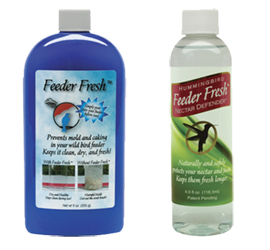View all of the titles in the
NatureSmart Bookstore

by Stan Tekiela
© NatureSmart
November 11, 2023
In the natural world, I really admire the rule breakers. You know, the species of plant or animal that just doesn’t fit the pigeon-hole that we people have dug for them and want them to fit nicely into. I like the species that go against the preconceived ideas we have set forth for the species. Recently while doing some gardening in my large perennial flower garden, which by the way is in my front yard not backyard like most people, I found a large orchid plant. I know all the plants in my garden so when I saw this orchid it stopped me in my tracks because I know I didn’t plant it.
I think everyone understands that orchids are highly prized and specialized plants for their finicky nature and large, interesting flowers. We have about 200 species of orchid in the United States and about 28,000 species of orchids around the world. With that in mind, how many species of orchids grow in your own garden? I am guessing none, so that is why when I spotted this orchid in my garden it really caused me to stop.
Turns out that the orchid growing in my garden is called Broad-leaved Helleborine (Epipactis helleborine) and has been sweeping across North America. So here is a world class rule breaker, because it’s an orchid that is a non-native plant that is in some places is considered an invasive species. That is crazy that a kind of orchid grows and acts like a weed and invades our gardens and yards.
Recently while driving across the back roads of South Dakota on my way to Wyoming, I came across another fabulous rule breaker. In these wide-open expansive areas, I started to see a tall, long-legged bird standing on wooden fence posts. When you first see this bird, it looks like a shorebird. You know, the kind of bird you see at seashores with long legs for wading into the surf. But there are no large bodies of water in the prairie of South Dakota. This bird looks so out of place.
This rule breaking bird is the Upland Sandpiper (Bartramia longicauda). It is a large sandpiper, about 12 inches tall, that lives in the open country with tall grasses. It has a unique shape with a small dove-like head, a long neck and an elongated body. They have long yellow legs and feet. For all practical purposes, this bird belongs at the ocean shore but here it is in the middle of the grassland prairie.
They often get up on tall perches, like fence posts, and scan the area for grasshoppers, crickets, beetles, snails and earthworms which are the preferred foods. These birds spend their winters in South America and return to the wide-open prairies of the upper Midwest for nesting.
They build a nest on the ground in thick stands of grass. They are one of the species that always lays the same number of eggs each time they nest. The female produces four eggs and both parents help to incubate and watch over the young after they hatch.
With the loss of prairie habitat, and grazing of livestock, the numbers of Upland Sandpipers are now on the decline. They only do well in relatively undisturbed areas and quickly abandon if too many cattle move into the area.
I decided that I would try to capture a few images of these birds, so I pulled over and down into the ditch of the rural backroad, right where I saw a few Uplands a couple minutes before. It didn’t take long, and one flew up onto a flat top wooden fence post. I needed to reposition my truck to get a better-looking background. I slowly inched my truck forward and with my window down I found a wonderful green background to really make the image of the bird pop.
I used my longest lens, an 800 mm with a 1.4 teleconverter. This combination means I have the equivalent of 1140 mm. This way I don’t have to get too close and spook the bird off the perfect perch. I can remain far enough away to keep the bird comfortable and still allow me to capture some stunning images of this marvelous rule breaker.
After just a few minutes I had captured several different poses of the bird with a number of different looking backgrounds. Happy with my images of another wonderful rule breaker, I backed out of the ditch and up onto the road and kept heading west. Rule breakers are another example of why I admire Mother Nature so much. Until next time…
Stan Tekiela is an author / naturalist and wildlife photographer who travels the world to capture images of wildlife. He can be followed at www.instagram.com and www.facebook.com. He can be contacted via his website at www.naturesmart.com.
The nationally syndicated NatureSmart Column appears in over 25 cities spanning 7 states: Minnesota, Wisconsin, Michigan, Illinois, Ohio, New York and Pennsylvania. It is a bi-weekly column circulated to over 750,000 readers.
Horned Lark
The overall population of ground nesting birds is steadily going down. Here in North America, we have hundreds of bird species who nest directly on the ground. Prairie birds such as Eastern and Western Meadowlarks are a good example. If you are older than 50 you most likely remember hearing...
Sharp-tailed Grouse
The rights of spring come in many different forms, shapes, colors, and patterns. But the end goal is always exactly the same—reproduction. In nature, everything can be boiled down to one of two things, finding food to survive and mating for reproduction. It’s as simple as...
Greater Prairie Chicken
I am not a stranger to getting up at O’ dark thirty, to be able to get out and capture some images of wildlife. Over the past 40 years I would say it is definitely in the hundreds if not thousands of times I’ve dragged myself out of bed so early. So, last week when the alarm went off...
Marsh Rabbit
For me, I enjoy all aspects of nature, not just birds. I find all of nature fascinating and that is what keeps me interested. So, while leading a photo tour to Florida recently I was so excited to see a crazy cool critter that isn’t what you expect when you see it. A true rule...
Each year, during June and July, Stan Tekiela offers two world-class wildlife photography tours. Here's your chance to learn some tricks of the trade from a top professional.
View all of the titles in the
NatureSmart Bookstore
Check out Stan's latest photos at
NatureSmart Wildlife Images
Do you have any interesting wildlife in your backyard? Any nesting birds, deer, turkeys, reptiles, amphibians, or other unique wildlife? Or maybe a fox or coyote den?
If so, contact Stan at stan@naturesmart.com with your backyard wildlife. If he can get a good photo of the subject, he will send you a print of the photo to hang on your wall.
Order Prints and posters of Stan's photos at
» Prints & Posters
Hear Stan on radio stations all across the Midwest.
» More Info

When he's out in the field, Stan relies on his Vortex Razor binoculars and Vortex Razor spotting scope to help find the subjects for his award winning wildlife photography.

For thirty years, professional wildlife photographer Stan Tekiela has counted on Hunt's Photo and Video to provide him with professional photography equipment.
From tripods to camera bodies and lenses, Hunt's has been Stan's place for everything that he needs. Personal service and prompt shipping means Stan can count on Hunt's to support his professional wildlife photography career.


Professional Wildlife Photographer Stan Tekiela always uses Feeder Fresh in his seed feeders to help keep the feeders and food dry, clean and mold free.
He also uses Feeder Fresh Nectar Defender in all of his hummingbird feeders. It safely keeps nectar fresh longer.